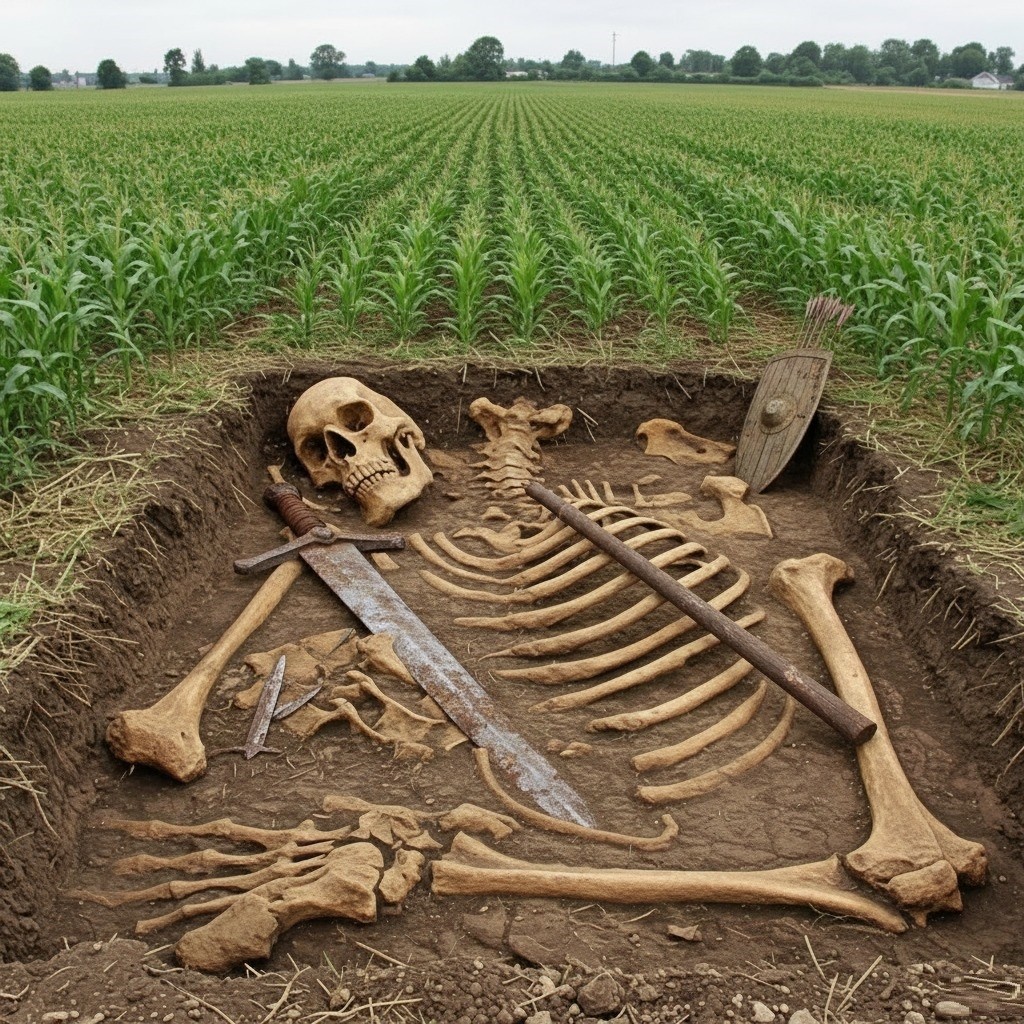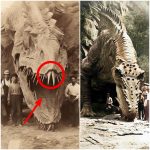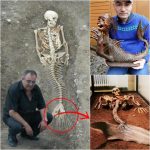The Giants of Schleswig-Holstein: Europe’s Forgotten Ancestors

Europe’s landscapes are rich with history, but sometimes a discovery emerges that defies all conventional timelines. In the quiet farmlands of Schleswig-Holstein, Germany, archaeologists have reportedly uncovered a skeleton of colossal proportions. Buried beneath a cornfield, the remains challenge our understanding of European prehistory and ignite debate about whether ancient myths of giants may hold kernels of truth.
A Colossal Discovery Beneath the Fields

The skeleton was unearthed in remarkable condition, its sheer size far beyond that of typical human remains. Preliminary measurements suggest a stature that aligns closely with ancient tales of giants—figures often dismissed as folklore. Carbon dating indicates the remains predate the earliest Germanic tribes by thousands of years, suggesting an elder culture whose existence has long since faded from memory.
The find was accompanied by hints of burial practices, including soil arrangements that may have marked a ceremonial resting place. More striking still, researchers uncovered oversized tools near the bones—objects crafted with skill, yet far too large for ordinary human use.
Giants in European Myth and Legend
For centuries, European folklore has been rich with stories of giants. From the Norse Jötnar to the towering figures in Celtic and Germanic sagas, giants were depicted as both adversaries and protectors, woven into tales of creation, conflict, and cultural identity.
Historians have long treated such accounts as metaphor, symbols of natural forces or exaggerated tales of enemy tribes. Yet the Schleswig-Holstein discovery raises the provocative question: were these myths echoes of real encounters with a now-forgotten people?
Scientific Caution Versus Cultural Fascination

While the discovery has captivated the public imagination, scientists urge caution. Skeptics argue that unusually large skeletons can sometimes result from rare medical conditions such as gigantism or acromegaly, rather than evidence of an entire population of giants. Others suggest that soil pressure and geological shifts can distort skeletal measurements over time.
Still, the combination of the skeleton’s size, the context of burial practices, and the oversized tools makes this case difficult to dismiss as mere anomaly. The possibility of a lost prehistoric culture with unique physical and cultural traits cannot be ruled out without extensive study.
Rewriting Europe’s Prehistory?
If confirmed, the Schleswig-Holstein giant would add a new and dramatic chapter to Europe’s past. It would suggest that before the rise of Celtic and Germanic tribes, the continent may have been home to a culture of extraordinary stature and sophistication—its memory surviving only as myth.
Such a revelation would not only alter our understanding of human history in Europe but also highlight the fragile line between legend and archaeology. Myths that once seemed like fantasy could, in fact, be distorted reflections of real people whose legacies were buried beneath millennia of soil.
Conclusion
The Giants of Schleswig-Holstein remain a mystery—part science, part legend, and wholly captivating. Whether the colossal skeleton represents a misunderstood anomaly, a lost culture, or the origin of Europe’s ancient giant sagas, it forces us to reconsider the boundaries between myth and history. Until further analysis is complete, the discovery stands as a haunting reminder that the earth still holds secrets capable of rewriting the story of our ancestors.











